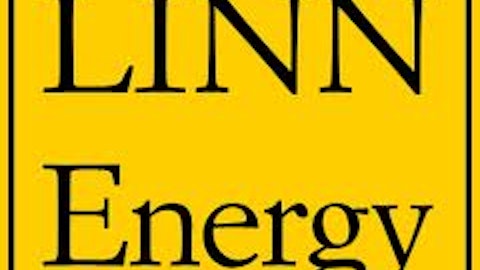Moreover, the company’s CEO recently stated on CNBC that he fully expects Linn’s distributable coverage ratio to be well above 1.0 times in the near future.
That being said, investors don’t have to settle for an MLP they aren’t comfortable with. Several other well-managed, profitable companies are available within the oil and gas MLP space. If you’re willing to concede a couple hundred basis points in yield, you can avoid the dark storm clouds of questionable accounting and investor pessimism.
Kinder Morgan Energy Partners LP (NYSE:KMP) and Buckeye Partners, L.P. (NYSE:BPL) are also Master Limited Partnerships in the oil and gas industry, and both have provided investors with recent distribution increases.
Kinder Morgan Energy Partners LP (NYSE:KMP) holds a $33 billion market value and operates 75,000 miles of pipelines and 180 terminals. The company’s pipelines transport products including natural gas, refined petroleum products, and crude oil.
Buckeye Partners, L.P. (NYSE:BPL) is no slouch, holding approximately 6,000 miles of pipeline. Buckeye also owns approximately 100 liquid petroleum products terminals with aggregate storage capacity of over 70 million barrels.
Kinder Morgan Energy Partners LP (NYSE:KMP) has raised its distribution steadily for many years, with its most recent April payout being 8% higher than the April payout last year. The company yields nearly 6% at recent prices.
Likewise, Buckeye Partners, L.P. (NYSE:BPL) recently announced a 1.2% distribution increase, and provides a hefty 6.25% at current prices.
The conclusion: Linn’s risk-reward too good to pass up
Investors would be wise to consider oil and gas MLPs, particularly for those who love to receive income from their investments. Kinder Morgan and Buckeye Partners are high-quality MLPs that have recently increased their distributions to shareholders and provide yields far in excess of what the broader stock market has to offer.
For investors willing to wade into deeper waters, Linn Energy is trading at $34.50, a level not seen since 2011. The company itself maintains that it’s worth much more, and brave investors who buy in are receiving a huge distribution yield. Assuming the company can get its operations back on solid footing going forward, this combination of capital gain potential and yield make Linn Energy a truly compelling opportunity. I will be putting the stock on my watch list and will sincerely consider buying once the dust settles a bit, and I would advise income investors to do the same.
The article What’s Going on With Linn Energy? originally appeared on Fool.com is written by Robert Ciura.
Copyright © 1995 – 2013 The Motley Fool, LLC. All rights reserved. The Motley Fool has a disclosure policy.


